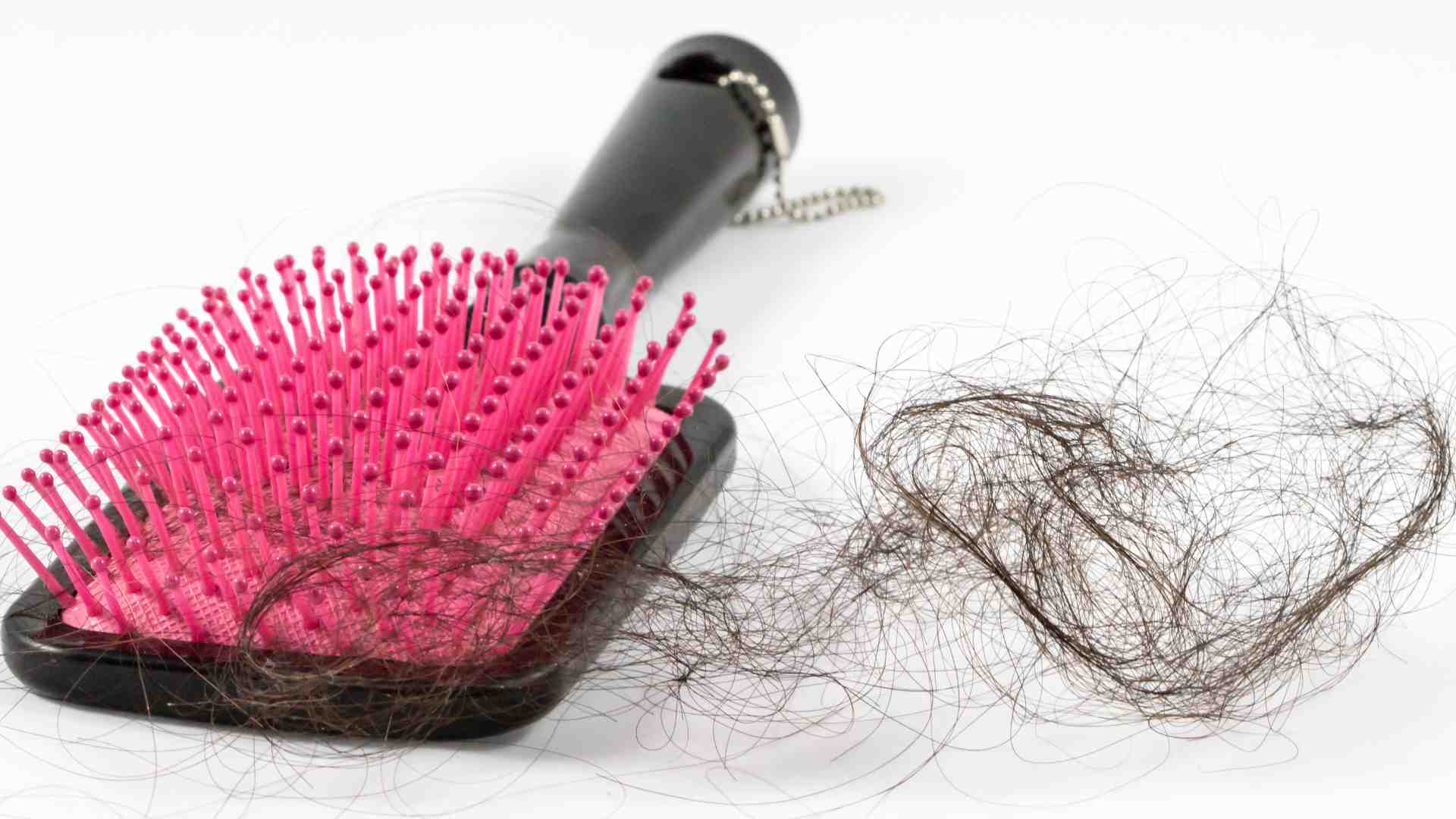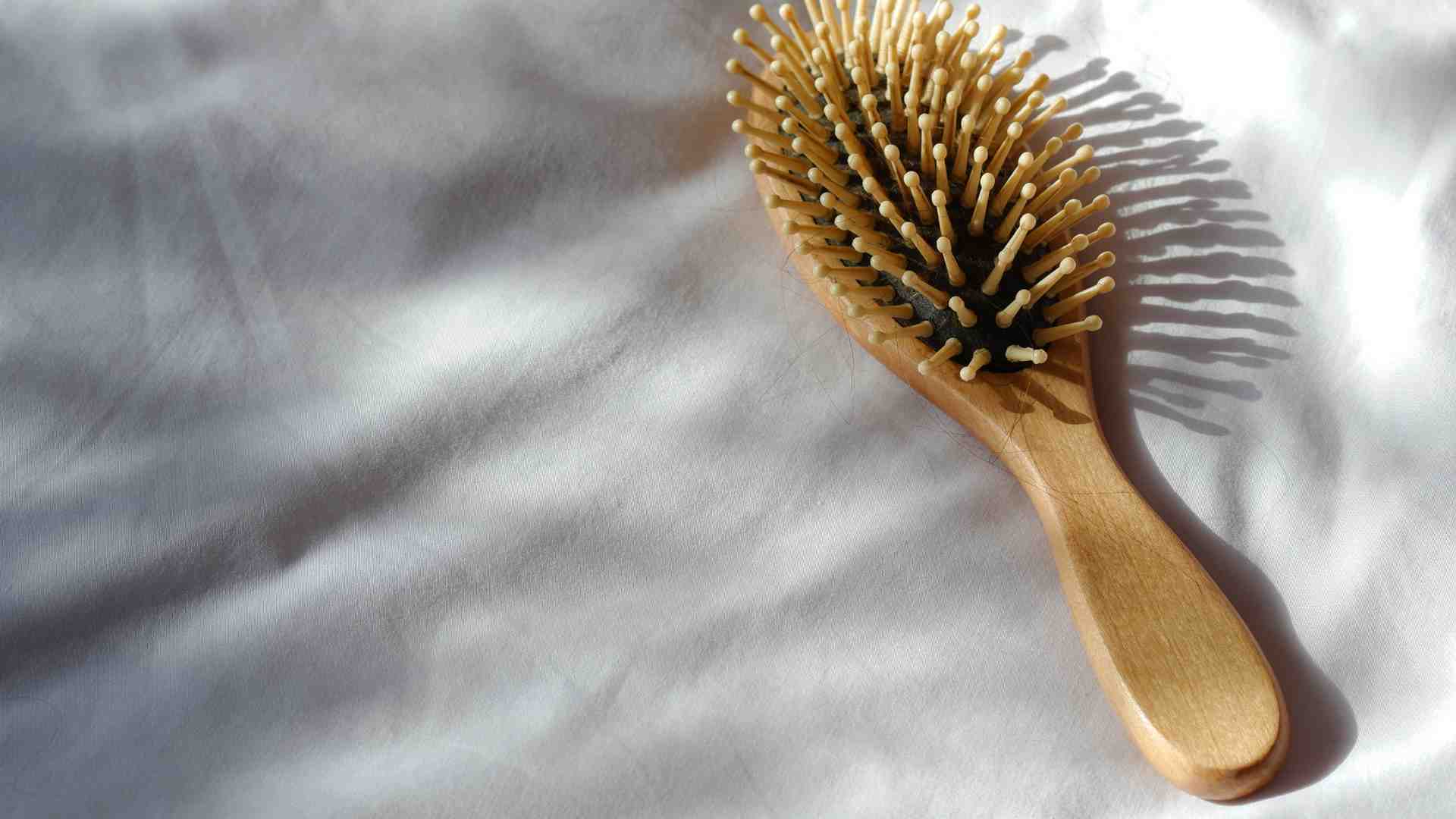Hair loss, a common concern that transcends age and gender, has captivated the attention of individuals seeking to preserve their locks and boost their confidence. While numerous factors contribute to this phenomenon, one key player has emerged as a focal point in the hair loss narrative: dihydrotestosterone, commonly referred to as DHT.
DHT, a derivative of testosterone, exerts a significant influence on the health and vitality of hair follicles. It plays a pivotal role in the delicate balance between hair growth and hair shedding. As our understanding of the complex mechanisms behind hair loss deepens, recognizing DHT’s role becomes crucial for those eager to comprehensively address their hair health concerns.
In this exploration, we delve into the intricate relationship between DHT and hair follicles. We’ll unravel the scientific basis behind DHT’s impact on hair growth cycles, follicle miniaturization, and ultimately, the progression of hair loss. By demystifying this connection, we aim to equip you with insights that empower informed decisions in your journey to maintain, strengthen, and rejuvenate your hair.
Dihydrotestosterone (DHT) as a Potent Androgen Hormone
Dihydrotestosterone (DHT) emerges as a potent androgen hormone that wields significant influence over various physiological processes, including hair growth and loss. Understanding the intricate nature of DHT is pivotal in unraveling the complexities of hair health and the progression of hair loss.
The Transformation: From Testosterone to DHT
DHT is derived from testosterone, a primary male sex hormone. This transformation occurs through the action of an enzyme called 5-alpha reductase. When testosterone encounters 5-alpha reductase, it undergoes a conversion process, resulting in the formation of DHT. This newly-formed DHT is considerably more potent than its precursor testosterone.
Role in Physiological Processes: From Development to Hair Loss
DHT’s influence extends far beyond its role in hair health. It plays a pivotal part in the development of male sexual characteristics during puberty. However, DHT’s presence doesn’t end there—it continues to impact various tissues and organs throughout adulthood.
Of particular significance is DHT’s role in hair follicles. While it contributes to the growth of facial and body hair, DHT’s effect on the scalp is more complex. Over time, the prolonged exposure of hair follicles to elevated levels of DHT can lead to a phenomenon known as follicle miniaturization. This process gradually transforms robust and healthy hair follicles into weaker structures, resulting in the production of finer, shorter hairs. Ultimately, this cycle of miniaturization contributes to the thinning and eventual loss of hair.
By delving into the intricacies of DHT, we gain insights into the role it plays not only in hair health but also in broader physiological processes. Armed with this knowledge, we’re better equipped to navigate the intricate web of factors that contribute to hair loss and to consider strategic approaches in the pursuit of maintaining vibrant hair.
Role of Hair Follicles in Hair Growth and Maintenance
To understand the interplay between DHT and hair loss, we must first grasp the central role that hair follicles play in the process of hair growth and maintenance.
Hair Follicles: The Epicenter of Hair Health
Hair follicles are small, dynamic structures nestled within the scalp that are responsible for hair growth. Each follicle goes through a cyclical process involving growth (anagen phase), transition (catagen phase), and rest (telogen phase) before restarting the cycle. The health and vitality of these follicles are integral to the appearance and longevity of our hair.
Sensitivity to DHT: A Genetic Predilection
Certain hair follicles are genetically predisposed to be more sensitive to the presence of DHT. These follicles are primarily located in specific regions of the scalp, often along the hairline and crown. When DHT binds to these susceptible follicles, a series of events is set in motion.
The Binding Process and Hair Miniaturization
DHT binds to receptors on the cell membranes of sensitive hair follicles. This interaction triggers a cascade of biochemical events within the follicle. Over time, these events lead to a process called follicle miniaturization. The hair follicles become progressively smaller and weaker, resulting in the production of thinner and finer hairs during each growth cycle. This gradual miniaturization eventually renders the follicles incapable of producing visible hairs, leading to the noticeable thinning and loss of hair in affected areas.
By understanding how DHT interacts with hair follicles, we uncover a critical piece of the puzzle behind hair loss. Recognizing the role of genetics and hormonal factors in this process empowers us to explore targeted strategies for managing and mitigating the impact of DHT on hair health.
Process of Hair Follicle Miniaturization and Thinning
The process of hair follicle miniaturization stands as a crucial mechanism underlying the gradual thinning of hair strands, driven by the relentless influence of dihydrotestosterone (DHT).
The Miniaturization Process Unveiled
Hair follicle miniaturization involves a series of steps that transform once robust hair follicles into weakened structures. When sensitive hair follicles are exposed to elevated levels of DHT over time, the effects become increasingly apparent.
DHT’s Disruptive Influence: A Gradual Transformation
Repeated exposure to DHT leads to the shrinking of hair follicles. Initially, these follicles produce hair strands that are thinner than their predecessors. With each hair growth cycle, the follicles produce progressively finer hairs. This phenomenon arises due to the influence of DHT on the anagen (growth) phase of the hair cycle. While DHT doesn’t prevent hair growth, it shortens the duration of the growth phase, leading to shorter hair strands.
Terminal to Vellus: The Final Evolution
As the miniaturization process continues, terminal hairs—those robust, pigmented strands we associate with healthy hair—begin to undergo transformation. These terminal hairs gradually transition into vellus hairs, which are shorter, finer, and often less pigmented. Vellus hairs are typically found on areas of the body with minimal hair growth, such as the face of a child.
In areas particularly sensitive to DHT, such as the scalp’s frontal and crown regions, this transformation can ultimately lead to the complete absence of visible hair. The once-thick and lustrous hair that defined these regions becomes a memory, replaced by a landscape of vellus hairs and a visible thinning of the scalp.
Understanding the journey of hair follicle miniaturization offers insight into the complexities of hair loss. By recognizing the influence of DHT and its impact on the progression from terminal to vellus hairs, we pave the way for informed decisions and strategic interventions to counteract the effects of this intricate process.
How Genetics Play a Role in Determining an Individual’s Susceptibility to DHT-Related Hair Loss?

Genetics form a cornerstone in unraveling the intricate relationship between dihydrotestosterone (DHT) and hair loss. An individual’s genetic makeup significantly influences their susceptibility to DHT-related hair loss, shaping patterns that are often referred to as male and female pattern baldness.
Genetics and DHT Sensitivity: The Foundation
Genetic predisposition accounts for varying degrees of sensitivity to DHT among individuals. Hair follicles in certain regions of the scalp—such as the crown and frontal areas—are genetically primed to be more responsive to the presence of DHT. This heightened sensitivity means that these follicles are more likely to undergo miniaturization when exposed to elevated levels of DHT over time.
Inheritance Patterns and Hair Loss: Male and Female Pattern Baldness
The inheritance of DHT sensitivity and hair loss follows complex genetic patterns. Male pattern baldness (androgenetic alopecia) often results from a combination of genes inherited from both sides of the family. It’s not solely passed down from the mother’s side, as is sometimes mistakenly believed. This type of hair loss is influenced by multiple genetic factors, each contributing to the overall susceptibility to DHT.
Similarly, female pattern baldness also has genetic components, although the inheritance pattern can be less straightforward. Genes from both parents play a role, contributing to the likelihood of developing hair thinning in certain areas.
Understanding these inheritance patterns and genetic predispositions deepens our comprehension of the personalized nature of hair loss. It underscores the importance of family history in assessing one’s potential susceptibility to DHT-related hair loss and informs approaches to managing and addressing these concerns.
Treating DHT-Related Hair Loss
In the realm of combating DHT-related hair loss, certain medications have earned approval from the U.S. Food and Drug Administration (FDA) as effective interventions. Two prominent options include minoxidil and finasteride, each targeting the DHT factor in distinct ways.
FDA-Approved Medications: Minoxidil and Finasteride
- Minoxidil: Minoxidil is a topical solution available over-the-counter (OTC) that is applied directly to the scalp. It’s believed to extend the anagen (growth) phase of the hair cycle and stimulate hair follicles, promoting thicker and denser hair growth. While the exact mechanisms are not fully understood, minoxidil’s effectiveness is backed by clinical studies, and it’s considered a widely recognized intervention for hair loss.
- Finasteride: Unlike minoxidil, finasteride requires a prescription due to its potent impact on DHT. Finasteride works by inhibiting the action of 5-alpha reductase, the enzyme responsible for the conversion of testosterone into DHT. By reducing DHT levels, finasteride effectively curtails the hormonal influence that leads to follicle miniaturization and hair thinning. However, finasteride’s use requires medical supervision due to potential side effects.
Consulting a Healthcare Professional: Essential Step
Before embarking on any treatment journey, consulting a healthcare professional or dermatologist is paramount. They can assess your individual condition, medical history, and potential risk factors to recommend the most appropriate course of action. This professional guidance ensures that treatments are tailored to your specific needs and minimize the risk of adverse effects.
Navigating the realm of DHT-related hair loss treatments with the guidance of medical experts empowers you to make informed choices that align with your hair health goals. Remember, while DHT plays a significant role in hair loss, strategic interventions, under professional oversight, can pave the way for healthier, more vibrant hair.
Role of Lifestyle Factors in Managing DHT-Related Hair Loss.

While medications like minoxidil and finasteride offer targeted interventions for DHT-related hair loss, the impact of lifestyle factors on hair health should not be underestimated. Adopting a holistic approach that encompasses stress reduction, a balanced diet, and a healthy lifestyle can complement medical treatments and contribute to overall hair vitality.
Stress Reduction: A Calming Influence
Stress is known to influence hair health, and managing stress levels can have positive effects. Chronic stress can potentially disrupt the hair growth cycle and contribute to hair shedding. Practices such as meditation, exercise, and adequate sleep can help alleviate stress, indirectly contributing to the well-being of your hair.
Balanced Diet: Fuel for Hair Growth
A well-rounded diet rich in essential nutrients is a cornerstone of vibrant hair. Nutrients like vitamins, minerals, and proteins are vital for the health of hair follicles. Incorporating foods abundant in biotin, zinc, iron, and omega-3 fatty acids can promote hair growth and resilience.
Healthy Lifestyle: A Comprehensive Approach
A healthy lifestyle encompassing regular exercise, proper hydration, and avoiding harmful habits like smoking can further enhance your hair health. Exercise improves circulation, which is beneficial for the delivery of nutrients to hair follicles. Staying hydrated supports overall bodily functions, including those related to hair growth.
Genetic Factors: Recognizing Realities
While lifestyle changes can contribute to healthy hair, it’s important to acknowledge that they may not reverse genetic predisposition to DHT-related hair loss. Genetic factors remain significant contributors, and lifestyle modifications are not a guaranteed solution for reversing hereditary hair thinning.
As you embark on your journey to nurture your hair health, consider adopting lifestyle practices that support both your physical and mental well-being. While they may not change your genetic makeup, these practices can contribute to the overall vitality and resilience of your hair. Pairing lifestyle strategies with targeted medical interventions creates a comprehensive approach to managing DHT-related hair loss and striving for hair that radiates health and vibrancy.
Ongoing Research Aimed at Understanding DHT’s Role More Comprehensively

The realm of understanding dihydrotestosterone (DHT) and its intricate role in hair loss continues to evolve through ongoing research efforts. As the scientific community delves deeper into the complexities of DHT-related hair loss, promising new treatments and therapies are emerging, offering hope for improved management in the future.
Advancements in Understanding DHT: An Evolving Landscape
Research is shedding light on the precise mechanisms through which DHT impacts hair follicles. This deeper understanding is paving the way for innovative interventions that specifically target DHT’s influence on follicle miniaturization and hair thinning.
Emerging Treatments: A Ray of Hope
Promisingly, emerging treatments aim to mitigate the effects of DHT without some of the potential side effects associated with current options. These advancements include novel medications that target specific aspects of DHT metabolism or receptor interactions, potentially offering more precise and effective interventions.
The Future: A Brighter Outlook
The future holds exciting prospects for the management and treatment of DHT-related hair loss. As researchers continue to decipher the molecular intricacies of DHT’s impact on hair follicles, the potential for safer, more effective treatments becomes increasingly likely. These treatments could offer solutions that not only slow down hair loss but also promote more robust hair growth.
While we await these innovations, it’s essential to remain informed about the latest research and treatment developments. Consulting healthcare professionals and staying attuned to scientific advancements will empower individuals to make choices that align with the evolving landscape of DHT-related hair loss management. As the boundaries of knowledge expand, so too does the potential for improved strategies to support hair health and overall well-being.
Watch Measuring DHT levels before starting finasteride | Video
Top 5 FAQs and answers related to What is the role of DHT in hair loss
What is DHT, and how does it relate to hair loss?
DHT, or dihydrotestosterone, is a hormone derived from testosterone through the action of the enzyme 5-alpha reductase. DHT plays a key role in the miniaturization of hair follicles, leading to thinner and shorter hair strands. Elevated levels of DHT can contribute to the progression of androgenetic alopecia, or pattern hair loss.
How does DHT affect hair follicles?
DHT binds to receptors on hair follicles, primarily in regions like the crown and frontal areas. This binding triggers a series of biochemical events that cause hair follicles to shrink over time, a process known as follicle miniaturization. The hair strands produced by miniaturized follicles become progressively finer and shorter, eventually leading to visible hair thinning.
Is DHT-related hair loss influenced by genetics?
Yes, genetic factors play a significant role in determining an individual’s susceptibility to DHT-related hair loss. Some hair follicles are genetically predisposed to be more sensitive to the effects of DHT, particularly those in specific areas of the scalp. Family history can influence the likelihood of inheriting this susceptibility.
Can DHT-related hair loss be treated or reversed?
There are treatments available that target DHT-related hair loss. FDA-approved medications like minoxidil and finasteride can help slow down the progression of hair loss and promote hair growth. However, while these treatments can be effective, they may not completely reverse genetic factors that contribute to hair loss.
Are there lifestyle changes that can help manage DHT-related hair loss?
Adopting a healthy lifestyle, including stress reduction, a balanced diet, regular exercise, and proper hydration, can support overall hair health. While these changes can promote healthy hair growth and minimize the impact of external factors, they may not directly reverse the genetic influence of DHT-related hair loss.
Conclusion

In the intricate tapestry of hair health and its challenges, dihydrotestosterone (DHT) emerges as a central player with a significant impact on the process of hair loss. We’ve delved into the multifaceted relationship between DHT and hair follicles, uncovering how this hormone triggers the gradual transformation from robust strands to visibly thinner hair.
DHT’s Key Role: Catalyst of Transformation
DHT’s influence is far-reaching, affecting hair follicles by binding to receptors and initiating a sequence of events that lead to miniaturization. This process, unique to each individual’s genetic makeup, results in the progressive thinning and eventual loss of hair in susceptible areas.
Empowerment through Action: Tackling DHT-Related Hair Loss
Empowerment lies in addressing DHT-related hair loss with a proactive and informed approach. FDA-approved medications like minoxidil and finasteride offer targeted interventions that slow down the progression of hair loss and encourage hair regrowth. These treatments can be complemented by lifestyle changes such as stress reduction, a balanced diet, and a healthy lifestyle, which collectively contribute to vibrant hair health.
Guidance from Professionals: A Navigational Beacon
Amid the wealth of information, the role of healthcare professionals remains indispensable. Their expertise ensures personalized guidance, considering individual factors, risk profiles, and medical histories. Consulting these professionals before embarking on any treatment journey is essential for achieving optimal outcomes while minimizing potential risks.
In the quest for lustrous locks and a confident stride, the understanding of DHT’s role stands as a powerful tool. By combining strategic treatments, lifestyle choices, and expert advice, you embark on a journey toward nurturing not only your hair but also your overall well-being. Embrace this knowledge, make informed decisions, and partner with healthcare professionals to transform your approach to DHT-related hair loss into a story of resilience, vitality, and self-assuredness.
Please share this How Do Genetics Play a Role in Male Pattern Baldness? with your friends and do a comment below about your feedback.
We will meet you on next article.
Until you can read,6 Herbal Remedies and Oils That Promote Hair Growth
